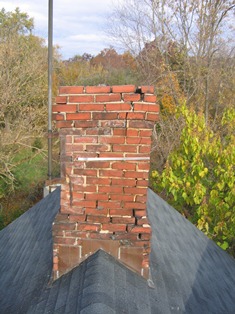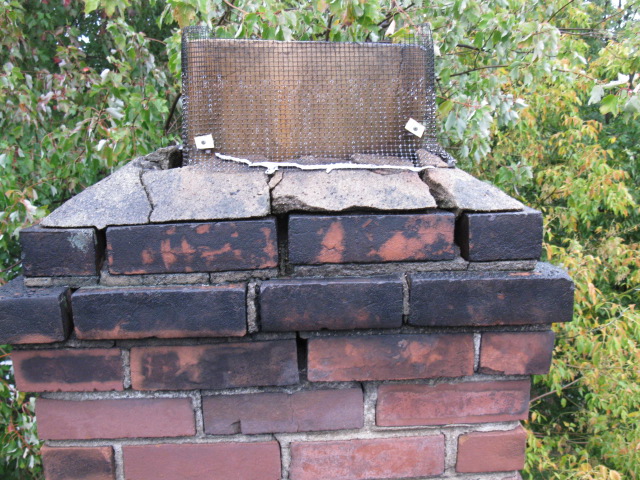Milwaukee Chimney Cleaning and repair by Clean Sweep Chimney Service of Milwaukee has found a nice article from CSIA.org to help with some common questions.
Q. How often should I have my chimney swept?
This a tougher question than it sounds. The simple answer is: The National Fire Protection Association Standard 211 says, "Chimneys, fireplaces, and vents shall be inspected at least once a year for soundness, freedom from deposits, and correct clearances. Cleaning, maintenance, and repairs shall be done if necessary." This is the national safety standard and is the correct way to approach the problem. It takes into account the fact that even if you don't use your chimney much, animals may build nests in the flue or there may be other types of deterioration that could make the chimney unsafe to use.
The Chimney Safety Institute of America recommends that open masonry fireplaces should be swept at 1/8" of sooty buildup, and sooner if there is any glaze present in the system. This is considered to be enough fuel buildup to cause a chimney fire capable of damaging the chimney or spreading to the home. Factory-built fireplaces should be swept when any appreciable buildup occurs. The logic is that the deposit is quite acidic and can shorten the life of the fireplace.
Q. My fireplace stinks, especially in the summer. What can I do?
The smell is due to creosote deposits in the chimney, a natural byproduct of woodburning. The odor is usually worse in the summer when the humidity is high and the air conditioner is turned on. A good sweeping will help but usually won't solve the problem completely. There are commercial chimney deodorants that work pretty well, and many people have good results with baking soda or even kitty litter set in the fireplace. The real problem is the air being drawn down the chimney, a symptom of overall pressure problems in the house. Some make-up air should be introduced somewhere else in the house. A tight sealing, top mounted damper will also reduce this air flow coming down the chimney.
Q. When I build a fire in my upstairs fireplace, I get smoke from the basement fireplace.
This has become quite a common problem in modern air tight houses where weather-proofing has sealed up the usual air infiltration routes. The fireplace in use exhausts household air until a negative pressure situation exists. If the house is fairly tight, the simplest route for makeup air to enter the structure is often the unused fireplace chimney. As air is drawn down this unused flue, it picks up smoke that is exiting nearby from the fireplace in use and delivers the smoke to the living area. The best solution is to provide makeup air to the house so the negative pressure problem no longer exists, thus eliminating not only the smoke problem, but also the potential for carbon monoxide to be drawn back down the furnace chimney. A secondary solution is to install a top mount damper on the fireplace that is used the least.
Q. I heat with gas. Should this chimney be checked too?
Without a doubt! Although gas is generally a clean burning fuel, the chimney can become non-functional from bird nests or other debris blocking the flue. Modern furnaces can also cause many problems with the average flues intended to vent the older generation of furnaces. We suggest you check the areas on gas and carbon monoxide for more information.
Q: What is level 3 creosote? I have an 80 year old home that was a longtime rental house. I have lived here five years and have been using the fireplace for four of those years. I do not know how long it has been since my chimney was swept (potentially decades, if ever). I just had a chimney sweep at my house and he informed me that the creosote in my chimney was quite thick (he used the term "level 3" creosote). He also said that in the smoke chamber, the brick is stepped (instead of smooth) and that there is a lot of dangerous buildup in there. He recommended two applications of an acid cleaning (which he said are not entirely foolproof, and work better above 45°F) and that we use a chemical when we burn our fire to help "chalkify" the creosote buildup. He showed me the buildup inside with a light and everything he said seemed to make sense. Does this sound like it's on the up and up? I can't find any info on this acid cleaning and I would like to know if this sounds like it is the proper course of action in a case like mine.
What you have described sounds pretty typical. In addition to the chemical treatment that you mentioned, professional-grade chemicals, usually in the form of a powder, can be applied by chimney sweeps to help change the nature of the glazed creosote to a form that can be removed by a professional with a brush Both forms of these products require some heat such as you would find in a small fire in the fireplace.
If the creosote is gummy, about the only way to deal with the creosote is with a chemical treatment or with an acid application. Acid applications are not as commonly used since they are harder to apply and have to be neutralized a few days after application. If the creosote is crusty or fractures when hit (as opposed to gummy) a rotary cleaning can be helpful. Read our position statement on chemical chimney cleaning products here.
Q: How do I know if he really cleaned my chimney? In the past, sweeps we’ve hired have always gone on the roof, checked the flashing, the mortar and all the workings of the chimney and then cleaned the chimney from the top of the house. Today, this sweep came in, looked into my fireplace from the bottom and said we don’t need it cleaned because he can still see the bricks. I asked to have it cleaned anyway. He then grabbed a wire brush and simply rubbed away any buildup from the main opening to the fireplace without even going up into the chimney to clean anything. Am I way off base, or did the sweep charge me without cleaning my chimney?
Your past experiences with chimney sweeps sound as though the sweep did the job he was hired to do. However, your most recent experience sounds a bit odd. If the sweep agreed to do a complete sweeping and only cleaned the brick in the fireplace firebox, you did not get the service that you paid for. A complete chimney sweeping includes the chimney flue and smoke chamber.
In the future you could ask for a Level 1 chimney inspection and a chimney sweeping. If the sweep doesn’t know what a Level 1 inspection is, find one that does. A Level 1 inspection is detailed in the National Fire Protection Association 211: Standard on Chimneys, Fireplaces, Vents and Solid Fuel-Burning Appliances.
Q: How common is it that chimney liners cannot be seen from inside the fireplace using only a flashlight? Is there some standard building requirement for the flue and the fireplace that you can't just look up from the fireplace and see the sky or chimney cap at the top of the chimney?
Flues are allowed to have up to 30 degree offsets. In most cases this will make a direct visual observation of the flue impossible. A video scan would be required to evaluate the flue condition.
The height of the chimney flue is not a factor. There is a big difference in what is observed between a visual inspection and a video inspection, even in short flues.
Q: What stainless steel liners require insulation?
A: Liners for gas and oil-fired appliances do not require insulation to meet the manufacturers’ installation and warranty requirements. Because of the lower flue gas temperatures and lesser heat transfer they are less likely to catch surrounding combustible material on fire. Those that are used with solid fuel-burning appliances do, however. If combustible materials are in contact with the chimney there are provisions that allow the liner to be installed in what is defined as a zero/zero install. That means there may be zero clearance to the interior of the chimney and zero clearance to the exterior of the chimney . The insulation may be of the blanket type or an expanded mica or masonry insulation. There are some manufacturers that will list a liner for use without insulation if it conforms to the NFPA 211 construction requirements. The problem is that it is almost impossible to determine that without destroying the chimney. It makes much more sense to insulate every liner serving a wood burning appliance. Even gas and oil-fired appliances that are vented into an exterior chimney will benefit from insulating the liner.
- See more at: http://www.csia.org/about-csia/faq.aspx#5
Clean Sweep Chimney Service is located in Southeastern Wisconsin and services Milwaukee, Waukesha, Slinger, and the entire Southeastern Wisconsin area. If you need Chimney repair or Chimney Cleaning Call us at (414) 483-9996. Our Website is at http://cleansweepwisconsin.com

















 nor the concern usually accorded other household service systems. The fact that chimneys may do their job reasonably well, even when abused or neglected, contributes to this atmosphere of indifference. Chimneys are far from the passive black holes that most people assume them to be. They perform several vital functions, and their simple appearance misrepresents their complex construction and performance requirements. A chimney deteriorated by constant exposure to the weather can be a potential safety hazard. Weather-damaged lining systems, flue obstructions and loose masonry materials all present a threat to residents. Regular chimney maintenance is essential to prevent damage, deterioration and future high-cost chimney repairs.
nor the concern usually accorded other household service systems. The fact that chimneys may do their job reasonably well, even when abused or neglected, contributes to this atmosphere of indifference. Chimneys are far from the passive black holes that most people assume them to be. They perform several vital functions, and their simple appearance misrepresents their complex construction and performance requirements. A chimney deteriorated by constant exposure to the weather can be a potential safety hazard. Weather-damaged lining systems, flue obstructions and loose masonry materials all present a threat to residents. Regular chimney maintenance is essential to prevent damage, deterioration and future high-cost chimney repairs. Chimney caps, also called rain covers, are probably the most inexpensive preventive measure that a homeowner can employ to prevent water penetration and damage to the chimney. Chimney caps have long been recognized as an important chimney safety and damage prevention component. Underwriters Laboratories (UL) specifies that any chimney lining system that is to be listed to their test standard must include a chimney cap.
Chimney caps, also called rain covers, are probably the most inexpensive preventive measure that a homeowner can employ to prevent water penetration and damage to the chimney. Chimney caps have long been recognized as an important chimney safety and damage prevention component. Underwriters Laboratories (UL) specifies that any chimney lining system that is to be listed to their test standard must include a chimney cap.